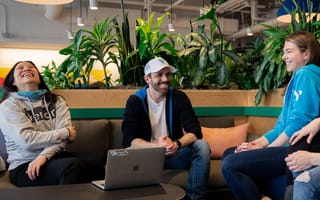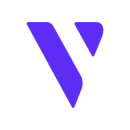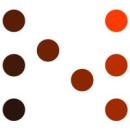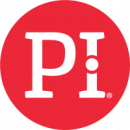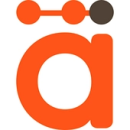With Q4 on the horizon, companies across Boston are gearing up to finish the year strong. For these eight companies, part of that strategy involves expanding their engineering teams to keep pace with growth.
To learn more about each company’s tech stack, upcoming projects and unique culture, Built In caught up with talented members of their engineering teams. If you’re scoping out new opportunities for fall and beyond, one of their open roles may be for you.
Their tech stack: “My team focuses on the execution of the engine, and leverages Java, Kotlin and Protobuf to help us integrate with and utilize Spark and its equivalent in cloud vendors,” Ngo said. “In addition, we take advantage of cloud storage solutions such BigQuery to help reduce our hosting cost and improve data-sharing capacity while still maintaining a concrete security around our data.”
Evolving execution: “I am currently working on a project that would allow our execution engine to read data from and write data to a BigQuery instance. BigQuery is a new tool offered by Google with a very efficient data storage and querying capability — the ability to access data from BigQuery directly would potentially improve our execution performance and thus deliver faster and better results to our end users.”
An even playing field: “I really like the flat-board structure of my team. I never feel any seniority hierarchy or distance from my team members — we share the utmost respect for one another, and are always open and honest when we discuss technical challenges. I do not feel intimidated when asking seemingly simple questions, and I always receive sincere support. At the same time, I am empowered to challenge the decisions that are made and my suggestions are always welcome. This culture extends through the entire engineering team.”
Tamr’s data mastering solutions offer cloud-native, hybrid and multi-cloud deployments.
Their tech stack: “We use Ruby on Rails with Postgres and Heroku, with StimulusJS sprinkled in for a very lightweight front end,” Lam said. “A few months ago we started incorporating HotWire, and I’ve really enjoyed diving into it! It’s so powerful. I love that we’re on the cutting edge of Rails technology.”
Dividing and conquering: “We’re working on splitting up a couple of concepts that currently live in a single table in our database. This change will have far-reaching impacts, so it’s been a great opportunity to learn about other parts of the business and to collaborate with stakeholders across engineering and other departments. It’s rewarding to know that our data model will more accurately reflect reality, and this will unlock our ability to work on some other features we’re excited about.”
Mutual success: “Vendr engineers collaborate with the product and design teams more than anywhere else I’ve worked. We’re all really excited about the problems we’re solving for our users, and I love getting insight into their processes and having the opportunity to provide feedback.”
Vendr wants to change B2B SaaS sales by empowering companies to purchase SaaS seamlessly.
Their tech stack: “We use Scala and Akka for all application- and service-level features in the implementation of our infrastructure,” Gentile said. “We use Python and Bash for various tooling for verification and deployment of our product. We are a one hundred percent cloud-based company and use various AWS services, such as AWS CloudFormation, as well as IAAS tools like Pulumi to deploy various parts of the ChaosSearch platform.”
Empowering customers: “Currently, I have been working on our virtual private cloud (VPC) initiative. This work enables customers to run the ChaosSearch platform on their own computer in their own environment. What is exciting about this project is ensuring the customer can run the ChaosSearch deployment themselves, with ample configuration options that will fit their various use cases.”
Bridging departments: “We have a very talented team at ChaosSearch! You can really feel the collaboration across different departments, and each individual cares about others’ growth. I also have various friends from college and previous jobs that I have worked with, and getting back into the startup grind with them has definitely been a rewarding experience.”
ChaosSearch delivers data insights at scale, promising to achieve true data lake economics.
Their tech stack: “Historically, our core tech stack is pretty straightforward with Angular JavaScript on the front end, Python in our middle tier, and Postgres for our database,” Orcutt said. “Over the past year, we’ve initiated efforts to promote several new technologies. For example, we’re moving from Angular to React in our front-end technologies, and we’re introducing Looker for customer reporting on our platform. Perhaps most significantly from an architecture perspective, we’re in the process of migrating significant portions of our architecture to AWS to take advantage of serverless computing in the cloud. This gives us better horizontal scale as we take on increasing and varied workloads.”
Powerful building blocks: “The projects that I find most exciting are the ones that help us scale. When we went through a massive period of growth in 2020, so we got a first-hand look at how our system scaled. And that is a truly unique opportunity. I love thinking about our platform as building blocks, rather than as something that serves specific products. Transitioning to a more configurable, more robust way of composing our software to perform specific actions is really exciting for me. We’re evolving our very purpose-built system into something that’s a bit more generic, and a lot more powerful.”
Cohesive collaboration: “The coolest part about Numerated is our teams’ collective mindset. In a lot of organizations, engineers within a team put on blinders and they work in a very siloed fashion. That’s absolutely not the case here. We have significant interaction both within the development teams as well as with the rest of the company, beyond anything that I’ve seen elsewhere. We have regular vehicles for communication at our Monday and Friday get-togethers to help us stay aligned and drive our OKRs. Everybody understands what our priorities are, what we’re doing to grow the business and the adjustments we’re making along the way. Continuous focus has been critical to our success.”
Numerated is a fast-growing fintech company that makes business banking easy for financial institutions and their clients.
Their tech stack: “We use TypeScript and Angular CLI on the front end, and on the back end, we use C# and .NET Core,” Ficara said. “We also use Microsoft Azure as our cloud service provider. When performing front-end work, developers use Visual Studio code, and when performing back-end development, it’s a mix of Visual Studio and VS Code.”
Sharp and humble: “The architecture team and I spend our time working to stay ahead of increases in scale and reducing developer friction. We also work collaboratively with our developer experience teams on Azure infrastructure, our global personalization and innovation team on data science-related architecture, and the security team to improve our applications’ security. What I enjoy most is the people — we have a very sharp but humble group of people from all sorts of different backgrounds and experiences. It’s a true blessing to see a seasoned engineer learning something from a new hire fresh out of school or new to the field, and vice versa.”
A foundation of transparency: “There is a strong culture of inclusion and growth here. We have an onboarding program to help bring ‘PI Pioneers’ fresh out of school or new to the field to get up to speed with our business domain and tech stack. Although we do the traditional pull requests, we also have ‘code reads’ where engineers call out specific PRs they feel are essential for others to know. The PR and code reads are part of the culture of learning and sharing experience that I enjoy. Our leadership also holds a very open and transparent company monthly all-hands meeting where they go over wins, goals, financials and recognition. Transparency is one of the foundations at PI, and I feel it’s one of the things that sets us apart.”
The Predictive Index empowers companies to align their talent strategy with their business strategy for the best results.
Their tech stack: “Like most mobile app companies, we use Github to develop and collaborate on our codebase,” Wilson said. “The way we leverage the functionality allows the engineering team to grow through collaboration. We can discuss new ideas and get feedback in near real time as we’re developing the code. We also automate how code is reviewed, which allows people in different departments to review each other’s work. This means that everyone has ownership over a piece of the code base; whether you’re right out of school or a senior engineer, you’re responsible for helping our product improve.”
Upvotes for veggies: “The core function in our app is to search for food, and even small improvements in the food search experience can make a huge difference in the logging and weight loss success of our users. Every individual has a different approach to losing weight, and the engineering team keeps that top of mind when building new features, especially in the food-logging flow. The hardest part of this work was to figure out how to comb through more than 40 million foods and consider the relevance of each search result, the quality of the food entry and the speed to deliver a result. We created a system of popularity in which our population ‘votes’ for foods by logging them. For example, when someone searches for ‘coffee’ in the summer, they’re more likely to be looking for iced coffee than hot. We can use the recent popularity scoring to populate that result.”
Owning success: “We operate in cross-functional teams, which allows us to be part of a core group of experts on our platform teams (i.e. iOS, Android, or Infrastructure) and with a team of people outside of that group working on a common piece of the product. This allows us to keep our horizons open, and limits engineers from being siloed into one view of problem-solving. The amount of ownership across our company is unique as well; every engineer is responsible for helping to plan the direction of the work and be a part of figuring out what projects to take on next. There’s a lot of ownership and influence in the way we structure our work, and that’s made the impact that each developer has even bigger.”
Lose It! offers a weight loss app that has helped more than 40 million people drop over 100 million pounds.
Their tech stack: “We are fully cloud-hosted in the AWS ecosystem,” Wingert said. “AWS has been great for us, offering a ton of different technologies to help us solve problems around insurance communication without focusing on the overhead of on-premises infrastructure. Our development stack includes Express and Lambda Node.js for our back-end frameworks, React.js and React Native for our front-end frameworks and a variety of data stores (MongoDB, DynamoDB and Amazon Relational Database Service) depending on the use case. The technology I’m most excited about lately is AWS Simple Notification Service (SNS) and Message Queuing Service (SQS).”
Reacting live: “I am thrilled about what we are doing in the analytics and insights space. The team is currently creating an extensible pattern to allow for live processing of messages as they come into the system. This, combined with the conversational data created through our platform, will be a huge enabler for new functionality that helps Hi Marley move in the direction of coaching networks. With these functionalities, we’ll be able to react live to messages that require special attention and notify our customers. As an engineer, this is particularly exciting as we’re expanding the problem space we’re playing in – moving away from a pure focus on operational transactions, toward a system that uses that data to provide valuable insights to our customers along the way.”
Full speed ahead: “As a company, we’re in a great position, through funding and gaining early traction in the market. This foundation creates some awesome new opportunities and challenges. We now get to look beyond the early-stage startup phase and think into the future to build scalable solutions. We are lucky to have a great group of engineers who come to work excited to learn and make an impact at Hi Marley every day. We’ve been fortunate to grow our team exponentially through the pandemic, and our engineers have done a great job of maintaining a truly collaborative and fun culture through this journey.”
Hi Marley is an intelligent communication platform for the insurance industry.
Their tech stack: “We are hardcore about data, using frameworks like Spark and Dask, coding in Python and SQL, and leveraging PaaS like Databricks and Snowflake,” Alam said. “APIs are a big part of who we are; we map data to Fast Healthcare Interoperability Resources (FHIR) and use Elastic to query this data in seconds. At the IaaS layer, we have broad exposure to custom networking interfaces and seemingly every AWS service on the platform, focusing on EKS, Helm and serverless deployments. We now look to take our story to Azure and Google Cloud Platform (GCP).”
Organizing chaos: “Doing security in the cloud for healthcare and deriving insights that will help improve patient outcomes is challenging and rewarding. We are ingesting messy, tangled and disconnected healthcare data and making that data complete and correct using automation, advanced data engineering, AI and machine learning. We also believe in democratizing data and enabling interoperability in the healthcare ecosystem by enabling APIs through FHIR so that app developers, payers, providers and patients can access data and insights from our platform that can drive critical decisions.”
Remote together: “Despite being remote, we find ways to come together! Our Slack channels are full of mini-communities around music, movies, fantasy drafts and morning coffee. It’s easy to further build relationships, despite our more remote world. As a company, we meet once a week to share what’s going on and keep everyone informed. Even our new hires have a virtual happy hour, and we welcome them to the company so that the culture of inclusion starts on the first day. When you need help, you are one Slack message away from help and connecting with someone.”
Abacus Insights provides healthcare companies with a secure and efficient platform that organizes and exchanges healthcare data from various sources and formats.
